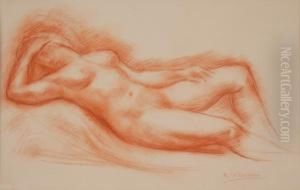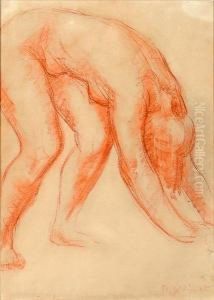Robert Wlerick Paintings
Robert Wlerick, born on April 10, 1882, in Mont-de-Marsan, France, was a distinguished sculptor known for his classical and serene style which often contrasted with the more avant-garde movements of his time. His full name was Robert Jean Wlerick, and he grew up in an era when sculpture was undergoing significant transformations due to the influences of modernism. Despite this, Wlerick maintained a commitment to the tradition of naturalism and is often associated with the return to order in the arts after World War I.
Wlerick studied at the École des Beaux-Arts in Paris, under the tutelage of renowned sculptors such as Émile Thomas and Antonin Mercié. His talent was recognized early on, and he began exhibiting his work at the Salon des Artistes Français in 1903. He was awarded the Prix de Rome in 1910, which provided him the opportunity to study at the prestigious Villa Medici in Rome, further solidifying his classical approach to sculpture.
His work includes a range of subjects from portraits to monumental public commissions. Wlerick was particularly adept at capturing the human form, characterized by a sense of volume and solidity, yet imbued with a delicate, lifelike presence. One of his most famous works is the 'Monument to the Dead of Mont-de-Marsan,' which exemplifies his sensitive approach to commemorative sculpture. He also created numerous busts and statues of prominent figures of his time, which were celebrated for their elegance and psychological depth.
During his career, Wlerick became a respected member of the French artistic community. He was appointed professor at the École des Beaux-Arts in 1937 and became a member of the Académie des Beaux-Arts in 1943. His influence extended to a younger generation of sculptors who sought to reconcile traditional techniques with the changing artistic landscape of the 20th century.
Robert Wlerick's contribution to sculpture remained significant until his death in Paris on February 28, 1944. Although his work did not align with the dominant avant-garde trends of his time, it has continued to be appreciated for its clarity of form and classical beauty. His sculptures can be found in various public spaces and museums, serving as a testament to his enduring artistic legacy.

